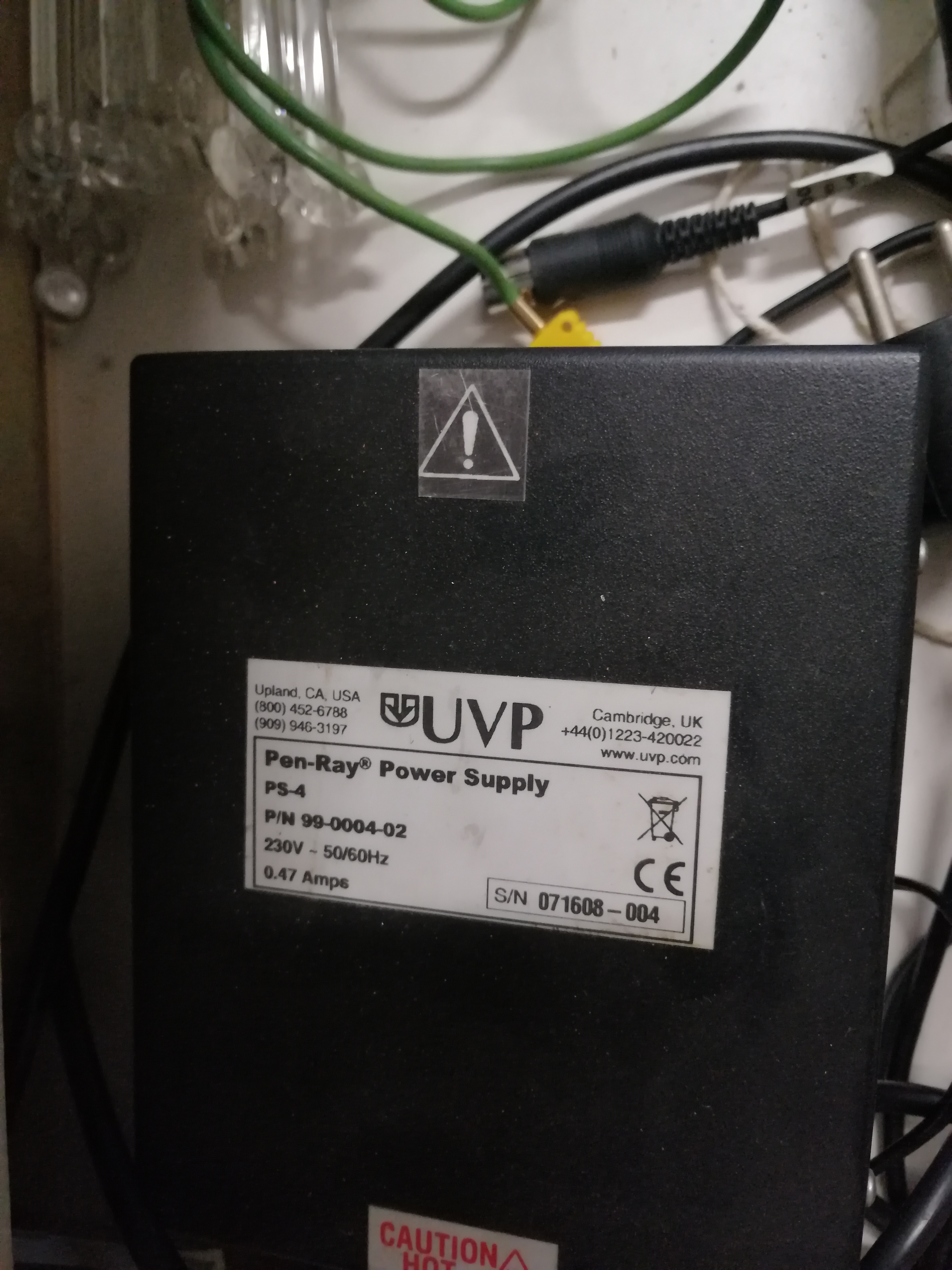FT-IR Bruker ALPHA II ATR module with diamond crystal
Hours of opperation: L-V, 10 – 16.
Access by appointment
phone or e-mail: Conf. Dr. Luiza Gaina Tel. 0722806608; ioana.gaina@ubbcluj.ro
Specialized personnel who operate the FTIR ALPHA II device
Conf. Dr. Dr. Luiza Gaina: gluiza@chem.ubbcluj.ro/ operator experimentat
Conf. Dr. Emese Gal: emese@chem.ubbcluj.ro/ operator experimentat.
Lector Dr. Tamas Lovasz: tlovasz@chem.ubbcluj.ro/ operator experimentat
Ing. Bianca Stoean: biancastoean@gmail.com / asistent cercetare
Drd. Gal Melinda: galmelindaeva12@yahoo.com/ asistent cercetare
Availability for access and external use: no special access conditions are required for the use of the FT-IR equipment.
The existing staff within the laboratory serves the requirements of the beneficiaries.
Third party access is granted by appointment.
Fees: 5 Euro/sample when using ATR module,
7 Euro/sample when measuring in KBr pills.
Access is restricted during the program of teaching and research activities within the group and
during the periods of technical revision of the device.
FT-IR Bruker ALPHA II ATR module with diamond crystal
Usability:
Utility:
Forensics, Heritage, Food Industry, Polymer Industry,
Characterization of organic, organometallic, inorganic compounds, nanomaterials.
Features:
- standard spectral range: minimum 350-8000 cm-1;
- the possibility to work with all types of samples: solids, liquids and gases;
- signal to noise ratio: better than 55,000:1 peak-to-peak (for a measurement time of 1 min with a resolution of 4 cm-1)
- adjustable minimum resolution: better than 2 cm-1, optionally better than 0.75 cm-1, continuously selectable between at least 0.75 cm-1 and 256 cm-1
- wave number precision: minimum 0.0005 cm-1 measured at 2000 cm-1;
- photometric accuracy: better than 0.1% T
- improved Michelson interferometer, permanently aligned, which does not require a dynamic alignment error correction system,
ATR module with diamond crystal having the following characteristics:
- spectral range: 350-8000 cm-1
- Spectral domain transmission mode : 350-8000 cm-1
- The module accepts solid samples in the form of pellets and transmission cells for liquid and gaseous samples. of pure diamond
The spectral library with at least 234 ATR spectra for polymeric compounds
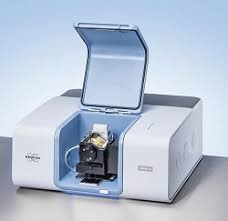
Digital polarimeter Perkin Elmer 341
Availability:
Hours of operation: 10-16
Main features:
Digital polarimeter with photoelectric detection is a device used to measure the angle with which an optically active substance rotates the plane of polarization of a radiation.
The angle α with which an optically active substance rotates the plane of polarization of light is directly proportional to the concentration c of the substance as well as to the thickness l of
of the layer of substance traversed. α = [α] l c.
For an optically active (non-racemic) compound, the specific optical rotation can be determined in solution. Knowing the specific rotation can be used to determine the optical purity
(optical purity, o.p.) of an optically active (non-racemic) compound, recommended in the field of diluted solutions. The optical purity of an enantiopure compound (so e.e = 100%) is obviously
100% and that of the racemic 0%. The optical purity appears to be linearly dependent on the specific rotation.
Utility:
- photophysical and electronic analyzes of organic compounds, metal complexes. Organic chemistry, bio-organic chemistry, medical applications, teaching applications
Access conditions:
No special access conditions are required. The existing staff within the laboratory serves the requirements of the beneficiaries. Access to the analyzes carried out in the laboratory
it is restricted during the program of teaching and research activities within the group and during the periods of technical revision of the devices.
- photophysical and electronic analyzes of organic compounds, metal complexes. Organic chemistry, bio-organic chemistry, medical applications, teaching applications
Access conditions:
No special access conditions are required. The existing staff within the laboratory serves the requirements of the beneficiaries. Access to the analyzes carried out in the laboratory it is restricted during the program of teaching and research activities within the group and during the periods of technical revision of the devices.
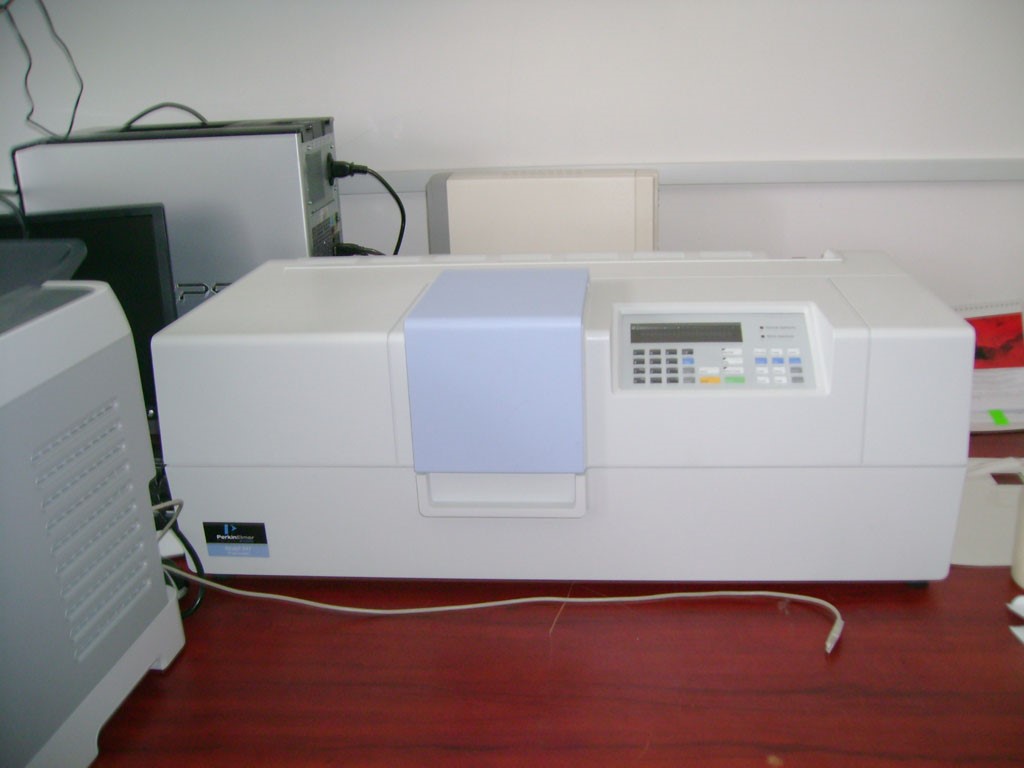
Florescence spectrometer Perkin Elmer LS 55
Availability:
Hours of operation: 10-16
Main features:
Fluorescence represents the phenomenon of spontaneous emission of electromagnetic radiation (radiative process) following an electronic transition between two states with
same spin multiplicity (singlet). 2 Molecules that go into an excited state by absorbing a photon can return to the ground state by emitting de
fluorescence or through other non-radiative mechanisms (without radiation emission) such as: internal conversion (IC), intersystem crossing
(Intersystem Crossing, ISC - can be followed by the phosphorescence process), vibrational relaxation, intramolecular charge transfer or conformational changes.
The analyzes can be done for clean, organic and inorganic samples, by dissolving the substances the sample is obtained, which was previously measured on the UV-Vis device.
The device also has a module for solid samples.
Utility:
- photophysical and electronic analyzes of organic compounds, metal complexes. Organic chemistry, bio-organic chemistry, medical applications, teaching applications
Access conditions:
No special access conditions are required. The existing staff within the laboratory serves the requirements of the beneficiaries. Access to the analyzes carried out in the laboratory
it is restricted during the program of teaching and research activities within the group and during the periods of technical revision of the devices.
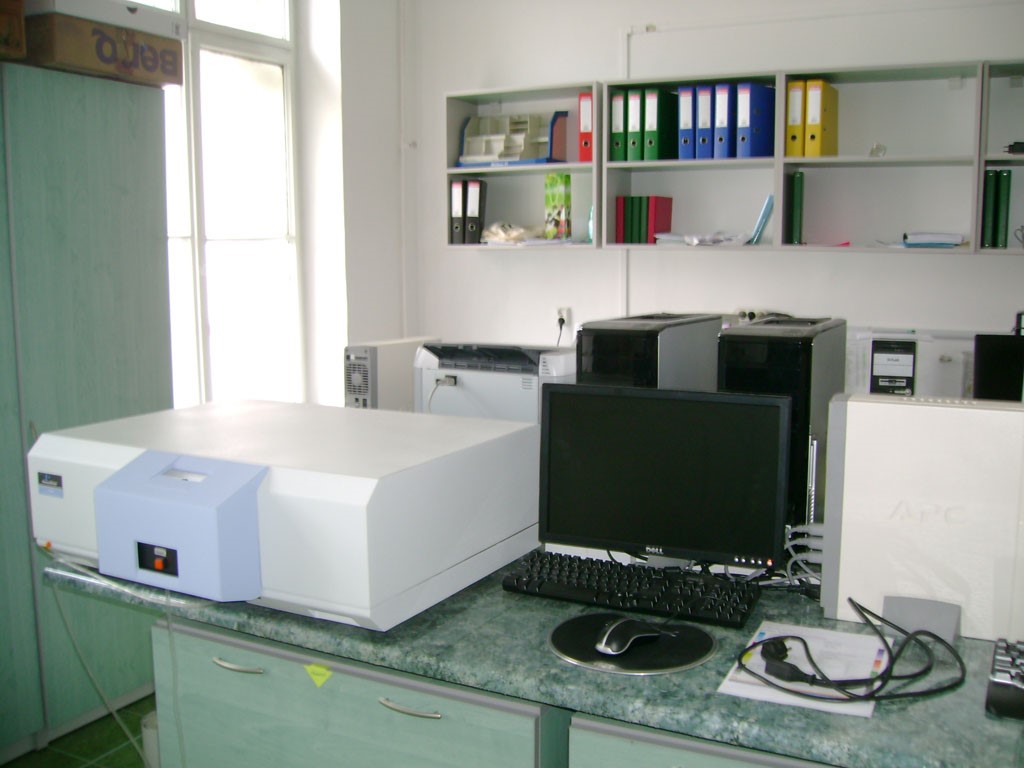
UV-Vis spectrometer Perkin Elmer Lambda 35
Availability:
Hours of operation: 10-16
Main features:
By absorbing a photon when a molecule is irradiated, the transition of an electron from an occupied orbital to a free orbital of higher energy takes place,
the molecule passing from the ground state (S0) to the excited state (S1).
Depending on the structure of the molecule, two types of electronic transitions can mostly be encountered: π→π* and n→π* (for molecules that contain non-participating electrons).
Analyzes can be performed for clean, organic and inorganic samples, solid samples are dissolved in pure organic solvent. The amount of sample required
for a UV-Vis analysis it is approx. 5 mg. At the same time, there is the option of using the integrating sphere module, for solid samples.
Utility:
- photophysical and electronic analyzes of organic compounds, metal complexes. Organic chemistry, bio-organic chemistry, medical applications, teaching applications
Access conditions:
No special access conditions are required. The existing staff within the laboratory serves the requirements of the beneficiaries. Access to the analyzes carried out in the laboratory
it is restricted during the program of teaching and research activities within the group and during the periods of technical revision of the devices.
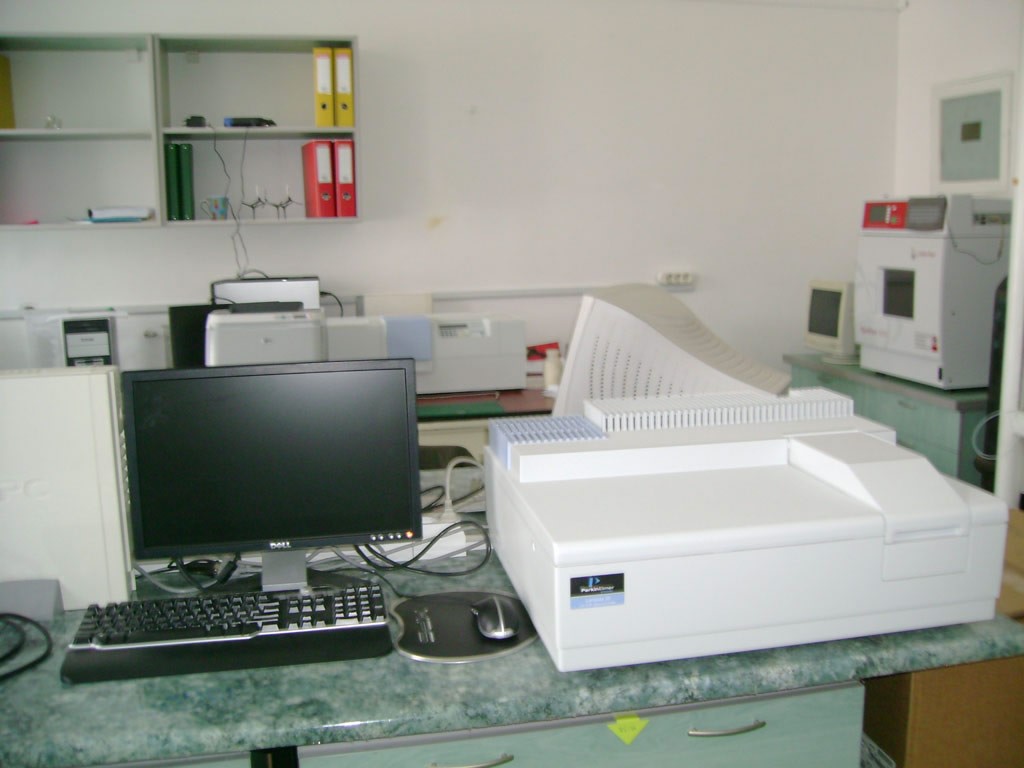
Potentiostat/ Galvanostat Gamry Reference 600
Availability:
Hours of operation: 10-16
Main features:
Voltammetry is an electroanalytical technique that determines the information of a chemical species or an analyte from electric currents generated by the variation of an applied potential.
That is, the applied potential E (V) and time (t) are independent variables; while current (A), the dependent variable.
In order to measure CV, the chemical species must usually be electroactive. Compounds must lose (oxidize) or gain (reduce) electrons.
For the reaction to start, the working electrode must provide the necessary potential theoretically determined by the Nernst equation. determining the values of E1/2
on the curve where the current obtained with the variation of E, called the voltammogram, the presence of an analyte can be identified. That is, each analyte, given the conditions
experiment, will have its own E1/2 value. Voltammetry instrumentation varies with analyte, solvent, electrode type, and application. But the vast majority
of them is based on a system consisting of three electrodes: a functional one (1), an auxiliary one (2) and a reference one (3).
Utility:
- photophysical and electronic analyzes of organic compounds, metal complexes. Organic chemistry, bio-organic chemistry, medical applications, teaching applications
Access conditions:
No special access conditions are required. The existing staff within the laboratory serves the requirements of the beneficiaries. Access to the analyzes carried out in the laboratory
it is restricted during the program of teaching and research activities within the group and during the periods of technical revision of the devices.
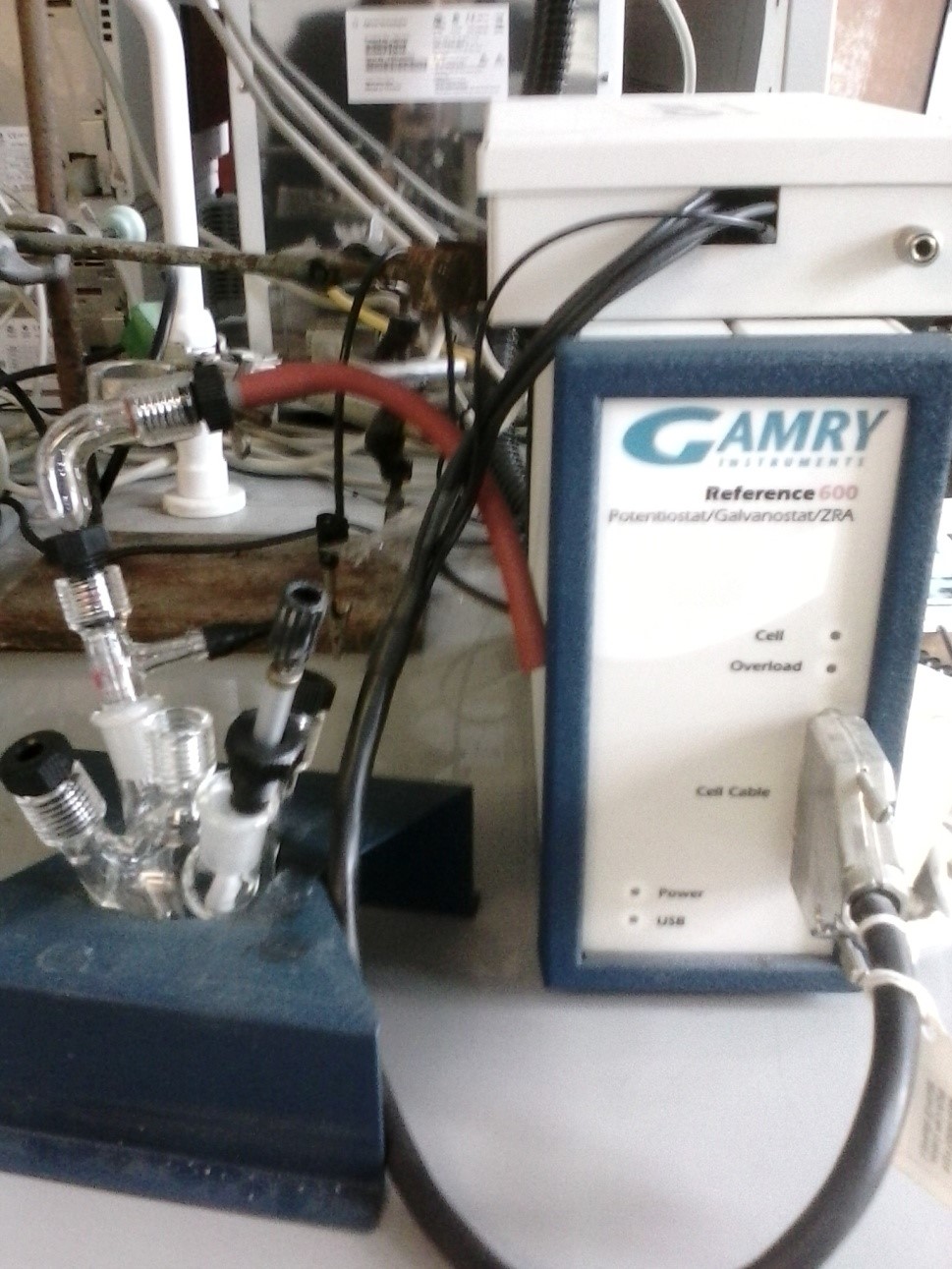
Bruker Vector 22 FT-IR spectrometer
The FT-IR laboratory aims to continue existing collaborations and establish new ones national and international collaborations with both higher education institutions and economic partners. No special access conditions are required. Existing staff within the laboratory serves the requirements of the beneficiaries. Access to analyzes carried out within the laboratory is restricted during the schedule of teaching activities and research within the group and during the periods of technical revision of the device.
Students, PhD students and teaching staff from UBB have access to the experimental facility within the training programs and research projects in which they participate.
Third party access to the equipment and technology existing within the laboratory is based on research contracts, the possibility of publishing the results in partnership, the exchange of experience, technological and skills transfer.
Availability:
Hours of operation: 10-16
Main features:
Infrared spectroscopy (mid-IR) is the most important method for identifying the presence of functional groups in the analyzed sample.
It can be used in the analysis of solids by two methods: using potassium bromide (KBr) or by using the ATR module.
Analyzes can be done for clean, organic and inorganic samples, solid samples are measured without any preparation, liquid samples are solubilized
in a solvent where the spectrum is recorded. The amount of sample required for an FT-IR analysis is approximately 5-10 mg. The analyzed sample cannot
recover after measurement.
Utility:
- photophysical and electronic analyzes of organic compounds, metal complexes. Organic chemistry, bio-organic chemistry, medical applications, teaching applications
Access conditions:
No special access conditions are required. The existing staff within the laboratory serves the requirements of the beneficiaries. Access to the analyzes carried out in the laboratory
it is restricted during the program of teaching and research activities within the group and during the periods of technical revision of the devices.
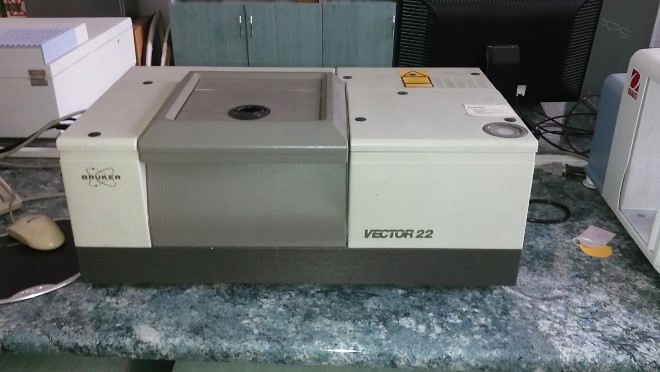
Singlet Oxygen generator with LEDs THORLABS- 405nm, 530nm, 660 nm
Availability:
Hours of operation: 10-16
Main features:
The system includes three LEDs with different wavelengths, which can be used to activate photosensitizers in diluted solution,
to produce singlet oxygen, which can be measured by the UV or FL technique. br
The THORLABS LED system is used to activate the photocatalyst, the photosensitizer. 1O2 - singlet oxygen - is generated
typically by photoexcitation of dyes (photosensitizers), including for photodynamic therapy and cancer diagnosis.
The system is equipped with three LEDs with different wavelengths 420, 530, 660 nm (diode laser emitting an elliptical beam of 4.6 mm x 1.7 mm).
Utility:
- photophysical and electronic analyzes of organic compounds, metal complexes. Organic chemistry, bio-organic chemistry, medical applications, teaching applications
Access conditions:
No special access conditions are required. The existing staff within the laboratory serves the requirements of the beneficiaries. Access to the analyzes carried out in the laboratory
it is restricted during the program of teaching and research activities within the group and during the periods of technical revision of the devices.
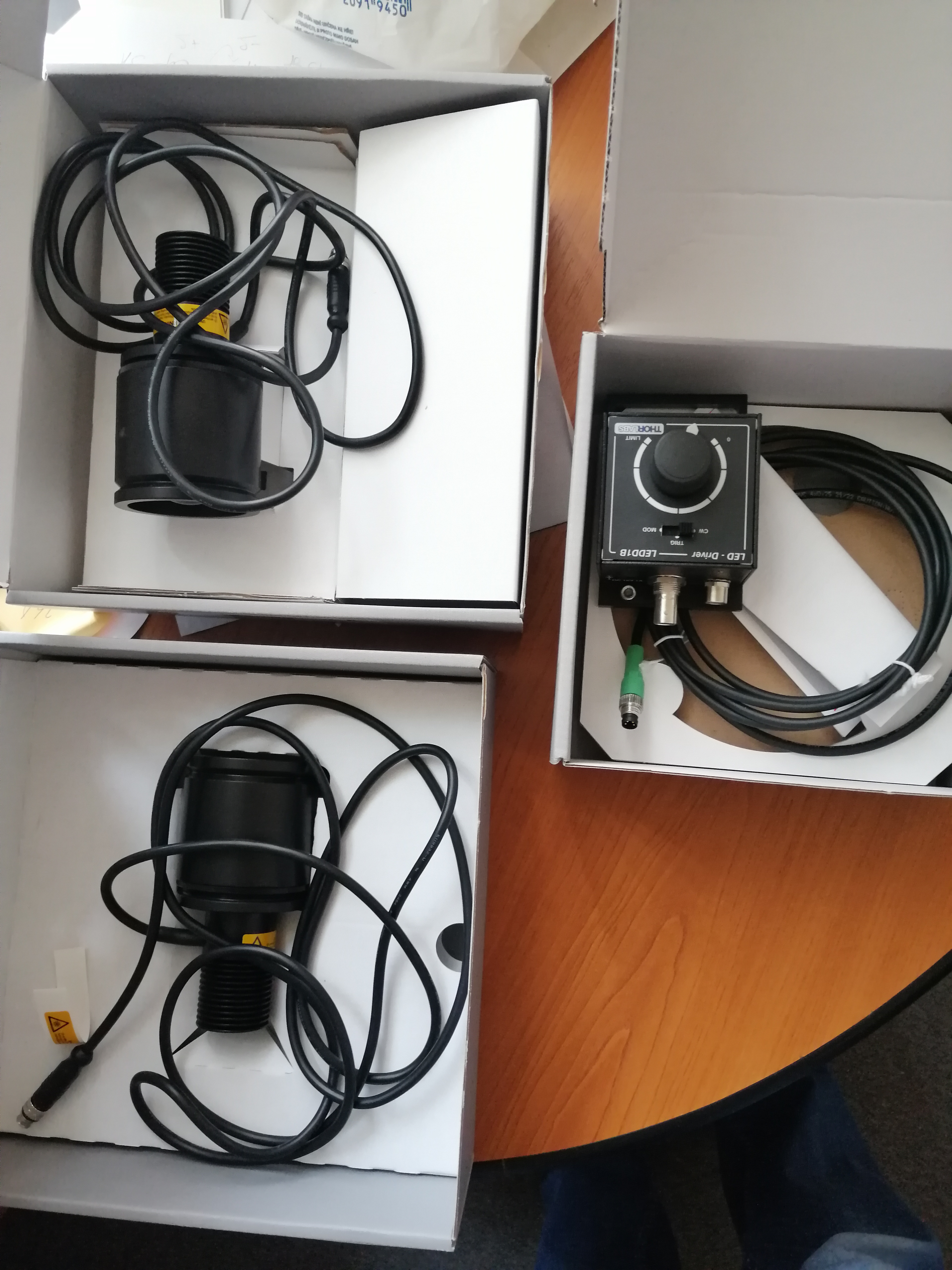
Gas Cromatograph with Mass Spectrometer Shimadzu QP 2010
The gas chromatograph coupled to the mass spectrometer is a system composed of a gas chromatograph and a quadrupole. Available ionization sources: EI, CI, NCI. Main accessories: gas chromatograph, automatic injection system AOC20i. The device allows the recording of mass spectra, the identification of compounds from a complex mixture using the existing database; determining the fragmentation scheme of the analyzed compounds. Value: 305,374.48 RON, Year of purchase: 2008,
Opening hours: M-F, 9:00 a.m. – 5:00 p.m.
Fields of utility: organic chemistry, organometallic chemistry, coordination chemistry, analytical chemistry, bioorganic chemistry, medical applications, didactic applications by: separating volatile compounds, testing catalysts, recording mass spectra using the various ionization techniques: Electron Impact (EI), Chemical ionization (CI) Negative Chemical Ionization (NCI), determination of the fragmentation scheme of the analyzed compounds; conducting GC-MS experiments, determining the composition of complex mixtures, qualitative and quantitative analyses; separation, identification compounds by using existing databases, etc.
Specialist staff Dr. Emese Gal – experienced researcher
The MS Laboratory aims to continue existing collaborations and establish new national and international collaborations both with higher education institutions and
with economic partners. No special access conditions are required. The existing staff within the laboratory serves the requirements of the beneficiaries.
Access to the analyzes carried out in the laboratory is restricted during the program of teaching and research activities within the group and during the periods
of technical revision of the device.
Students, PhD students and teaching staff from UBB have access to the experimental facility within the training programs and research projects in which they participate.
Third party access to the equipment and technology existing within the laboratory is based on research contracts, the possibility of publishing
results in partnership, exchange of experience, technological and skills transfer.
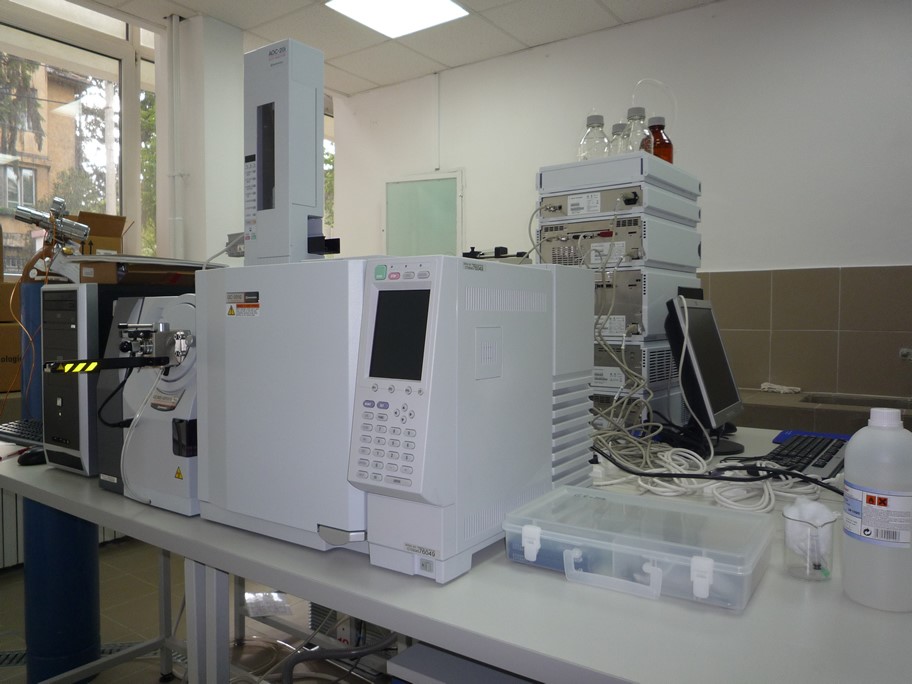
Preparative High Performance Liquid Cromatograph Agilent Technologies 1200 Series
High-performance liquid chromatography is an apparatus composed of eluent degasser, binary pump with automatic 100-place autosampler for thermostated samples, ELSD detector and detector for chiral molecules (chyralyser), respectively a fraction collector. Main accessories: degasser, automatic injection system, ELSD detector, chyralyser detector, fraction collector, nitrogen generator. The device allows recording/detecting chromatograms of any substance/mixture without being dependent on the optical properties of the analyzed compounds. Value: 399,843.57 RON, Year of purchase: 2008,
Opening hours: M-F, 9:00 a.m. – 5:00 p.m.
Fields of utility: organic chemistry, analytical chemistry, bioorganic chemistry, medical applications, didactic applications through: separation of compounds/salts, catalyst testing, quantitative separation of compounds using the fraction collector. Quantitative determination of compounds in mixtures using calibration curves.
Specialist staff Dr. Emese Gal – experienced researcher
The HPLC laboratory aims to continue existing collaborations and establish new national and international collaborations both with higher education institutions and and with economic partners. No special access conditions are required. The existing staff within the laboratory serves the requirements of the beneficiaries. Access to analyses carried out in the laboratory is restricted during the program of teaching and research activities within the group and during the periods technical revision of the device. Students, PhD students and teaching staff from UBB have access to the experimental facility within the training programs and research projects in which they participate. Third-party access to the equipment and technology existing within the laboratory is based on research contracts, the possibility of publishing the results in partnership, exchange of experience, technological and skills transfer.
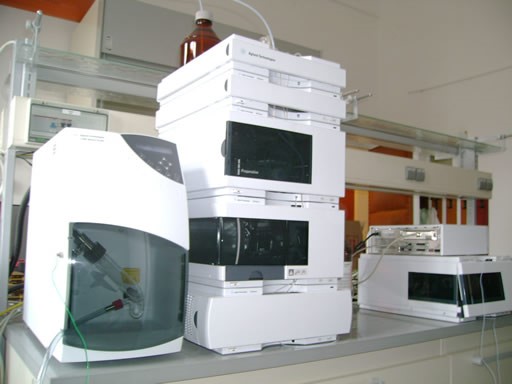
CombiFlash RF 200; Teledyne Isco
Availability:
Opening hours: 10-16
Main features:
The Teledyne Isco CombiFlash Rf 200 flash chromatography system offers high productivity separation automation
of reaction mixtures, programmable gradients, UV detection of compounds in the mixture, automatic detection of columns and
test tube holders (fraction collectors). FLASH chromatography is a purification method for synthetic compounds
which is based on medium pressure liquid chromatography, as opposed to traditional gravity column systems,
which are much slower and inefficient. FLASH chromatography differs from traditional chromatography due to particle size
from the stationary phase, and of the higher counterpressure caused by them, which requires the use of a pressure source for a
generate the required flow rate of the mobile phase in the
column
The Flash chromatograph system can be used to separate both liquid mixtures and solids. The quantity used
when separated, it can vary from a few milligrams to 100 grams. The flash combi system is dedicated to the separation of some mixtures with Rf,
and the Buchi system is recommended for quantities of mixtures greater than 20 g.
Utility:
- organic chemistry, bio-organic chemistry, medical applications, didactic applications, separation of organic/organometallic compounds. Identification of compounds based on molecular mass.
Conditions of access:
No special access conditions are required. The existing staff within the laboratory serves the requirements of the beneficiaries. Access to analyzes carried out in
the laboratory is restricted during the program of teaching and research activities within the group and during periods of
technical review of the devices.
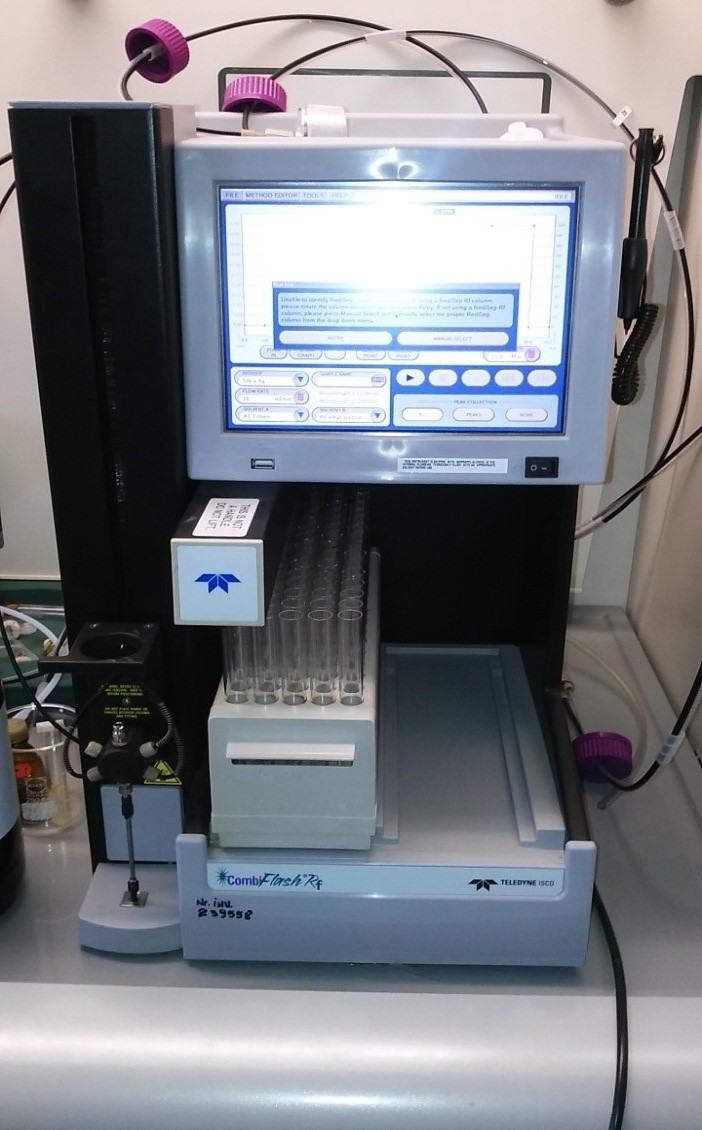
BUCHI Glass Oven B-580
Availability:
Opening hours: 10-16
Main features:
The vacuum distillation apparatus is used in the separation of reaction mixtures to obtain pure solid compounds.
The device is used for the purification of relatively small quantities, in the case of compounds with a high boiling point (over 300° C)
under very low pressure. The device consists of a tube-shaped oven, controlled by a thermostat. a glass bulb with joints
sanded is inserted together with the flask with the mixture of substances into the oven. The rest of the bulbs can be used to collect
distillates sequentially, when the desired fraction is collected, they are cooled with water or ice to aid in condensation.
A motor is used to rotate the system to increase the surface area for evaporation. br
The vacuum distillation system of compounds with a high boiling point operates between 40-300 C, the distillation volume is between 10-60 ml,
a maximum of four bulbs plus the balloon with the substance can be tied. The system is suitable to be used in advanced vacuum up to 10 mbar.
Utility:
- organic chemistry, bio-organic chemistry, medical applications, didactic applications, separation of organic/organometallic compounds. Identification of compounds based on molecular mass.
Conditions of access:
No special access conditions are required. The existing staff within the laboratory serves the requirements of the beneficiaries. Access to analyzes carried out in
the laboratory is restricted during the program of teaching and research activities within the group and during periods of
technical review of the devices.
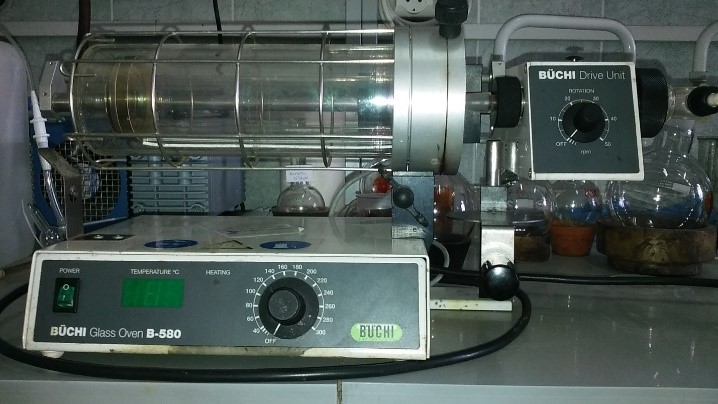
Flash EA-1112
Elemental analyzer is used to determine the percentage content (C, H, N, S, O) of organic compounds. The apparatus has an automatic autosampler, 2 packed reactors, a separation column and a TCD detector. The device uses helium as a carrier gas or oxygen for burning the samples. Samples are measured in tin/silver nacelles.
Main accessories: quartz reactor, column packing (electrolytic copper, CuO, glass wool, insulating shimring) nacelles tin/silver, helium, oxygen, filled columns.
The elemental analysis laboratory aims to continue existing collaborations and establish new national collaborations and
international both with higher education institutions and economic partners. No special access conditions are required.
The existing staff within the laboratory serves the requirements of the beneficiaries. Access to the analyzes carried out in the laboratory
it is restricted during the program of teaching and research activities within the group and during the periods of technical revision of the device.
Students, PhD students and teaching staff from UBB have access to the experimental facility within the training programs and
the research projects in which they participate.
The access of third parties to the existing equipment and technology within the laboratory is based on research contracts, the possibility of publishing the results
in partnership, exchange of experience, technological and skills transfer.
Availability:
Opening hours: 10-16
Main features:
Elemental analyzer is used to determine the percentage content (C, H, N, S, O) of organic compounds. The device has an automatic autosampler,
2 packed reactors, a separation column and a TCD detector. The device uses helium as a carrier gas or oxygen for burning the samples.
Samples are measured in tin/silver nacelles. Main accessories: quartz reactor, column packing (electrolytic copper, CuO, glass wool,
insulating seaming) nacelles of tin/silver, helium, oxygen, columns with filler. br
The analyzes can be done for clean, organic and inorganic samples, the samples are introduced with the automatic autosampler, introduced by injection with the automatic system,
the quantities required to determine the percentage of C, H, O, S, N is 2 mg/sample.
Utility:
- organic chemistry, bio-organic chemistry, medical applications, didactic applications, separation of organic/organometallic compounds. Identification of compounds based on molecular mass.
Conditions of access:
No special access conditions are required. The existing staff within the laboratory serves the requirements of the beneficiaries. Access to analyzes carried out in
the laboratory is restricted during the program of teaching and research activities within the group and during periods of
technical review of the devices.
Opening hours: 10-16
Main features:
Elemental analyzer is used to determine the percentage content (C, H, N, S, O) of organic compounds. The device has an automatic autosampler, 2 packed reactors, a separation column and a TCD detector. The device uses helium as a carrier gas or oxygen for burning the samples. Samples are measured in tin/silver nacelles. Main accessories: quartz reactor, column packing (electrolytic copper, CuO, glass wool, insulating seaming) nacelles of tin/silver, helium, oxygen, columns with filler. br The analyzes can be done for clean, organic and inorganic samples, the samples are introduced with the automatic autosampler, introduced by injection with the automatic system, the quantities required to determine the percentage of C, H, O, S, N is 2 mg/sample.
Utility: - organic chemistry, bio-organic chemistry, medical applications, didactic applications, separation of organic/organometallic compounds. Identification of compounds based on molecular mass.
Conditions of access:
No special access conditions are required. The existing staff within the laboratory serves the requirements of the beneficiaries. Access to analyzes carried out in the laboratory is restricted during the program of teaching and research activities within the group and during periods of technical review of the devices.
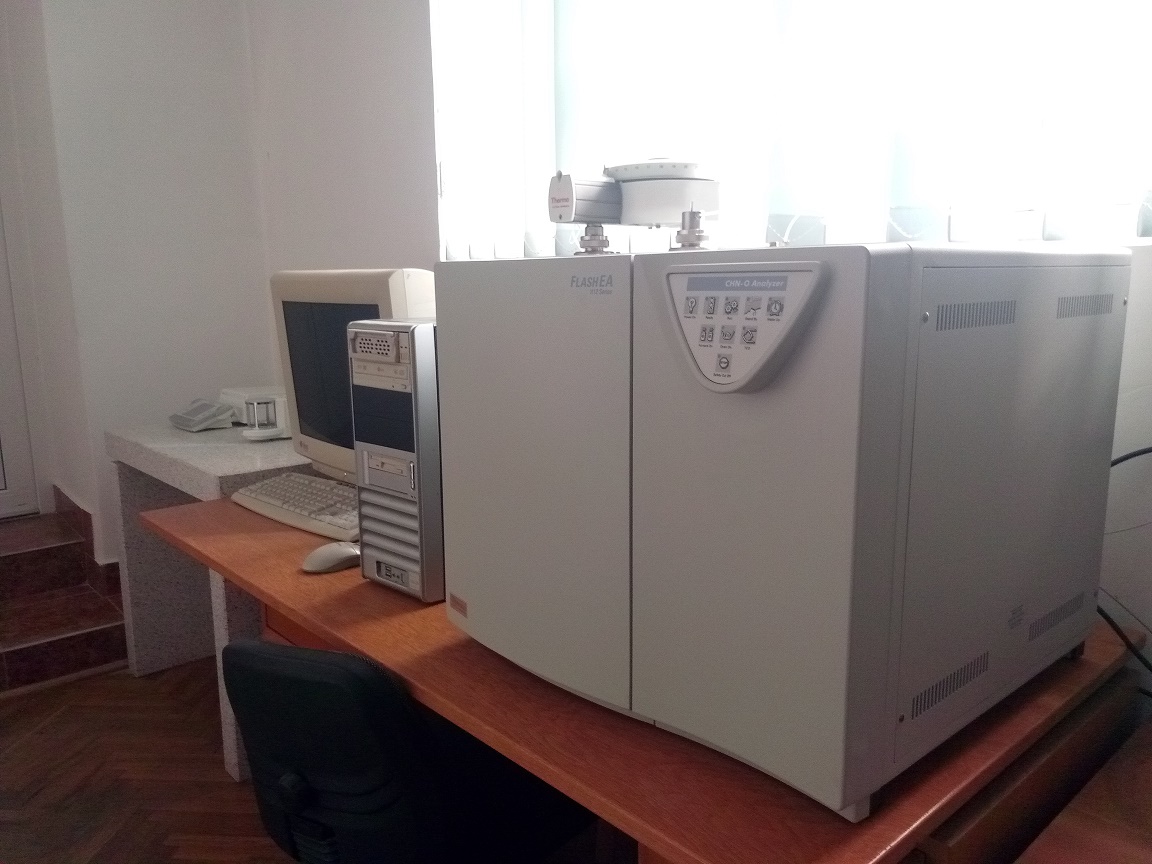
BUCHI C-615, C-605 FLASH QUATERNAR
Availability:
Opening hours: 10-16
Main features:
The Buchi flash chromatography system is composed of two modules, C-615 regulates the flow rate of C-605 modules, pumps 1 and 2, respectively monitors the current pressure.
The system lends itself to the separation of reaction mixtures over 15 g on glass columns filled with SiO2/Al2O3. It can be used with a flow rate of 250ml/min, delivery
of the solvent is done using three-piston pumps. br
The Flash chromatograph system can be used to separate both liquid mixtures and solids. The amount used for separation can vary from a few
milligrams to 100 grams. The Combi Flash system is dedicated to the separation of mixtures with Rf, and the Buchi system is suitable for quantities of mixtures greater than 20 g.
Utility:
- organic chemistry, bio-organic chemistry, medical applications, didactic applications, separation of organic/organometallic compounds. Identification of compounds based on molecular mass.
Conditions of access:
No special access conditions are required. The existing staff within the laboratory serves the requirements of the beneficiaries. Access to analyzes carried out in
the laboratory is restricted during the program of teaching and research activities within the group and during periods of
technical review of the devices.
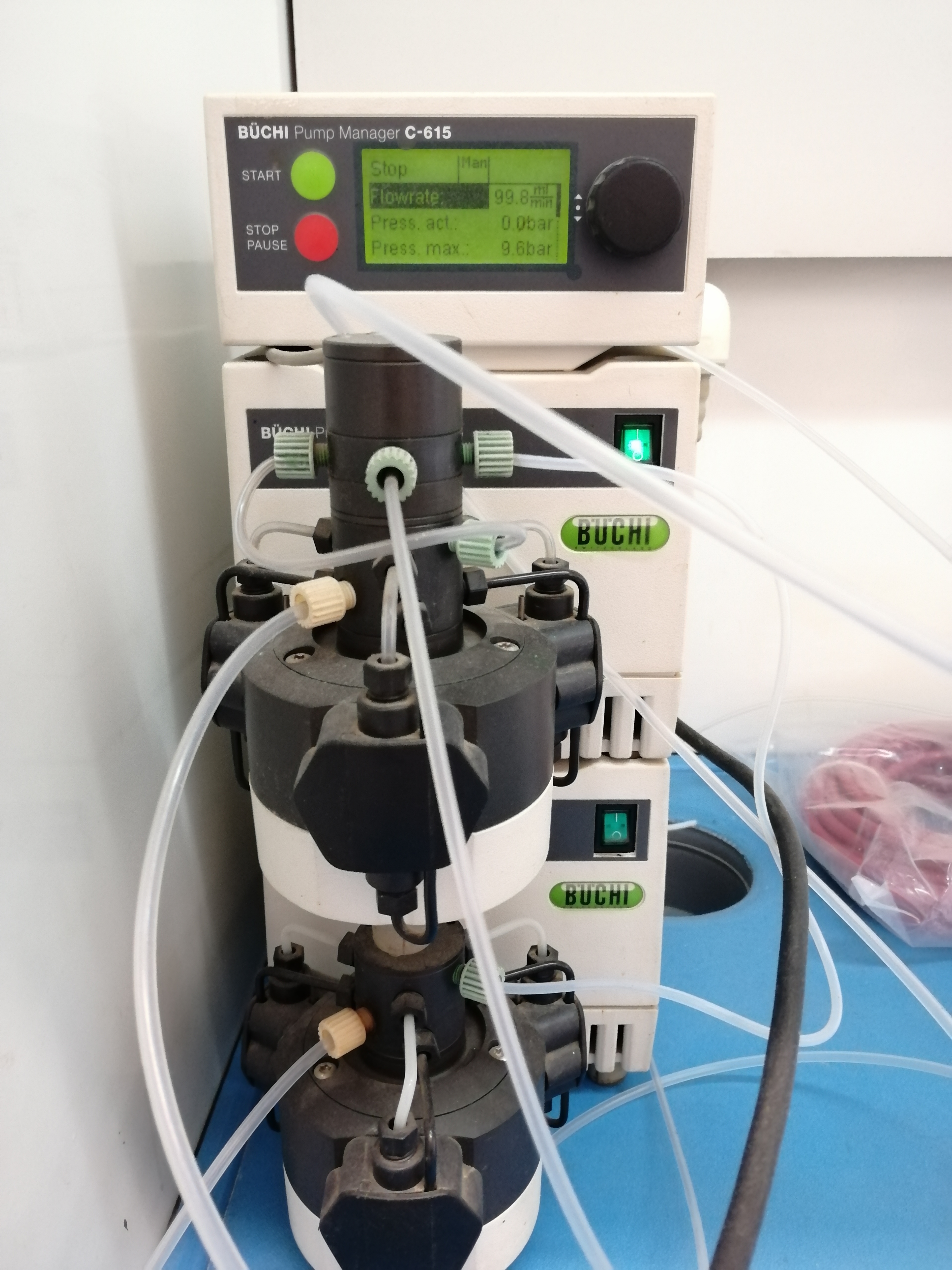
CLEAVER SCIENTIFIC NANOPAC-300 ELECTROFOREZA ORIZONTALA
Availability:
Opening hours: 10-16
Main features:
The nanoPAC electrophoresis system is an ultra compact and economical unit ideal for DNA / RNA electrophoresis (Horizontal). Multiple sizes can be used
of agarose gel and buffer solution. It is a flexible and easy-to-use system. The system contains: electrophoretic cell, gel mold, gel trays
with graduated ruler, dark strip for easy viewing of wells and easy loading of samples and set of combs. Agarose or polyacrylamide gels
are the most commonly used media and are available as plates. br
Horizontal electrophoresis in agarose gels to separate, identify and prepare DNA and RNA molecules in agarose gels.
The system uses an electric field to separate the molecules according to their charge and size.
Utility:
- organic chemistry, bio-organic chemistry, medical applications, didactic applications, separation of organic/organometallic compounds. Identification of compounds based on molecular mass.
Conditions of access:
No special access conditions are required. The existing staff within the laboratory serves the requirements of the beneficiaries. Access to analyzes carried out in
the laboratory is restricted during the program of teaching and research activities within the group and during periods of
technical review of the devices.

Microwave synthesis platform Anton Paar GmbH - Synthos 3000
Opening hours: M-F, between 9 am and 4 pm. Access is by appointment by phone or e-mail: Prof. Dr. Luiza Gaina Tel. 0722806608; ioana.gaina@ubbcluj.ro Specialist personnel who operate the Discover CEM microwave synthesis device Prof. Dr. Luiza Gaina ioana.gaina@ubbcluj.ro Prof. Dr. Cristea Castelia: castelia.cristea@ubbcluj.ro Prof. Dr. Emese Gal: emese.gal@ubbcluj.ro Availability for access and external use: No special access conditions are imposed in the microwave-assisted synthesis laboratory. The existing staff within the laboratory serves the requirements of the beneficiaries. Third party access is by appointment. Access fee: 15-30 Euro depending on the complexity of the procedure. Access to the microwave equipment is restricted during the program of teaching and research activities within the group and during the periods of technical revision of the device. Areas of use: Areas of utility: • syntheses of organic, inorganic compounds, nanomaterials, solid phase syntheses, polymer synthesis • demineralization for the preparation of samples for ICPMS analysis in order to identify metals from soil, mineral, food samples. Synthos 3000 technical and functional parameters

Microwave system CEM Discover with cooling unit Discover CoolMate
Opening hours: M-F, between 9 am and 4 pm. Access is by appointment by phone or e-mail: Prof. Dr. Luiza Gaina Tel. 0722806608; ioana.gaina@ubbcluj.ro Specialist personnel who operate the Discover CEM microwave synthesis device Prof. Dr. Luiza Gaina ioana.gaina@ubbcluj.ro Prof. Dr. Cristea Castelia: castelia.cristea@ubbcluj.ro Lecturer Dr. Tamas Lovasz: tamas.lovasz@ubbcluj.ro Prof. Dr. Emese Gal: emese.gal@ubbcluj.ro Availability for access and external use: No special access conditions are imposed in the microwave-assisted synthesis laboratory. The existing staff within the laboratory serves the requirements of the beneficiaries. Third party access is by appointment. Access fee: 15-30 Euro depending on the complexity of the procedure. Access to the microwave equipment is restricted during the program of teaching and research activities within the group and during the periods of technical revision of the device. Areas of use: microwave-assisted syntheses in organic chemistry, bioorganic chemistry, green chemistry, extractions, etc. Syntheses on solid support; Synthesis in solvent; Synthesis without solvent CEM discovery technical and functional parameters
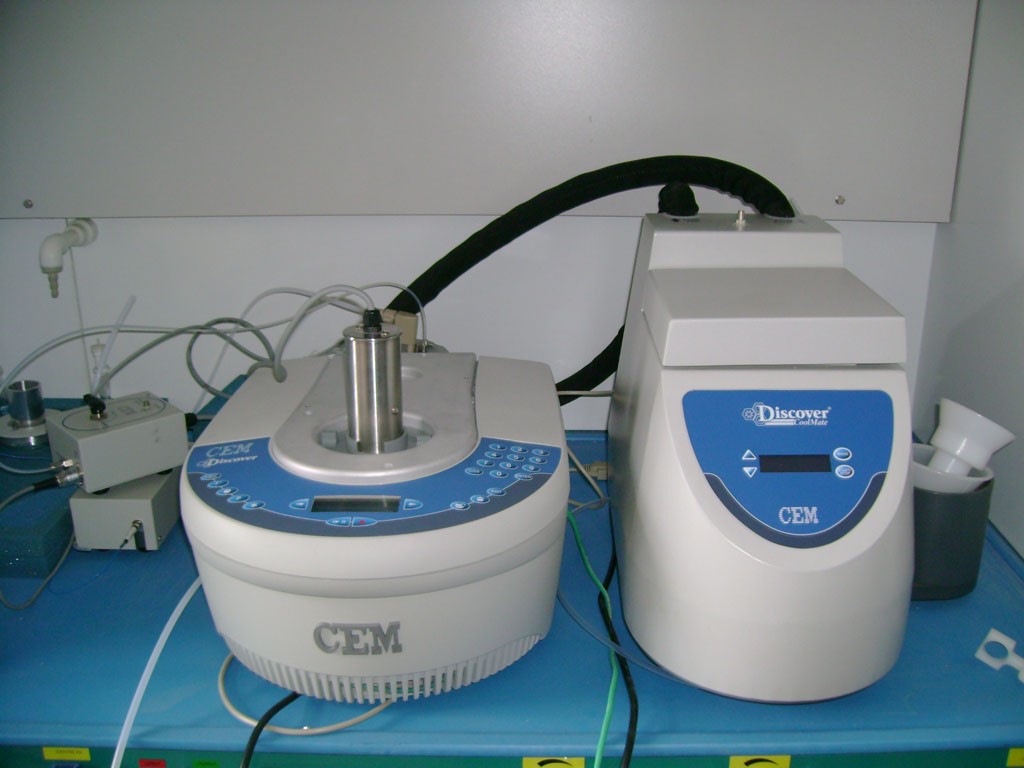
Ultrasound system with Sonics vibra cell probe
Availability:
Opening hours: 10-16
Main features:
Ultrasonic chemistry is a field of research in which waves in the frequency range of 20 kHz–1 MHz
they are the driving force behind chemical reactions. The reaction depends on acoustic cavitation, i.e. implosive formation, growth and collapse
of bubbles in the solution. Although this phenomenon, known as cavitation, lasts only a few microseconds, and the amount of
energy released by each individual bubble is minimal, the cumulative amount of energy generated is extremely large. br
The ultrasonic power source converts the 50/60 Hz line voltage into high frequency electrical energy.
This high frequency electrical energy is transmitted to the piezoelectric transducer inside the converter,
where it is changed into mechanical vibrations. The larger the tip of the probe, the larger the volume that can be processed,
but at a lower intensity. The device has four probes for organic solutions of different volumes, respectively for solutions
water of different volumes.
Utility:
Fields of use: ultrasound-assisted syntheses in organic chemistry, green chemistry, syntheses in organic solvent/water.
Conditions of access:
No special access conditions are required. The existing staff within the laboratory serves the requirements of the beneficiaries. Access to
the analyzes carried out in the laboratory are restricted during the teaching and research program
from within the group and during the periods of technical revision of the devices.
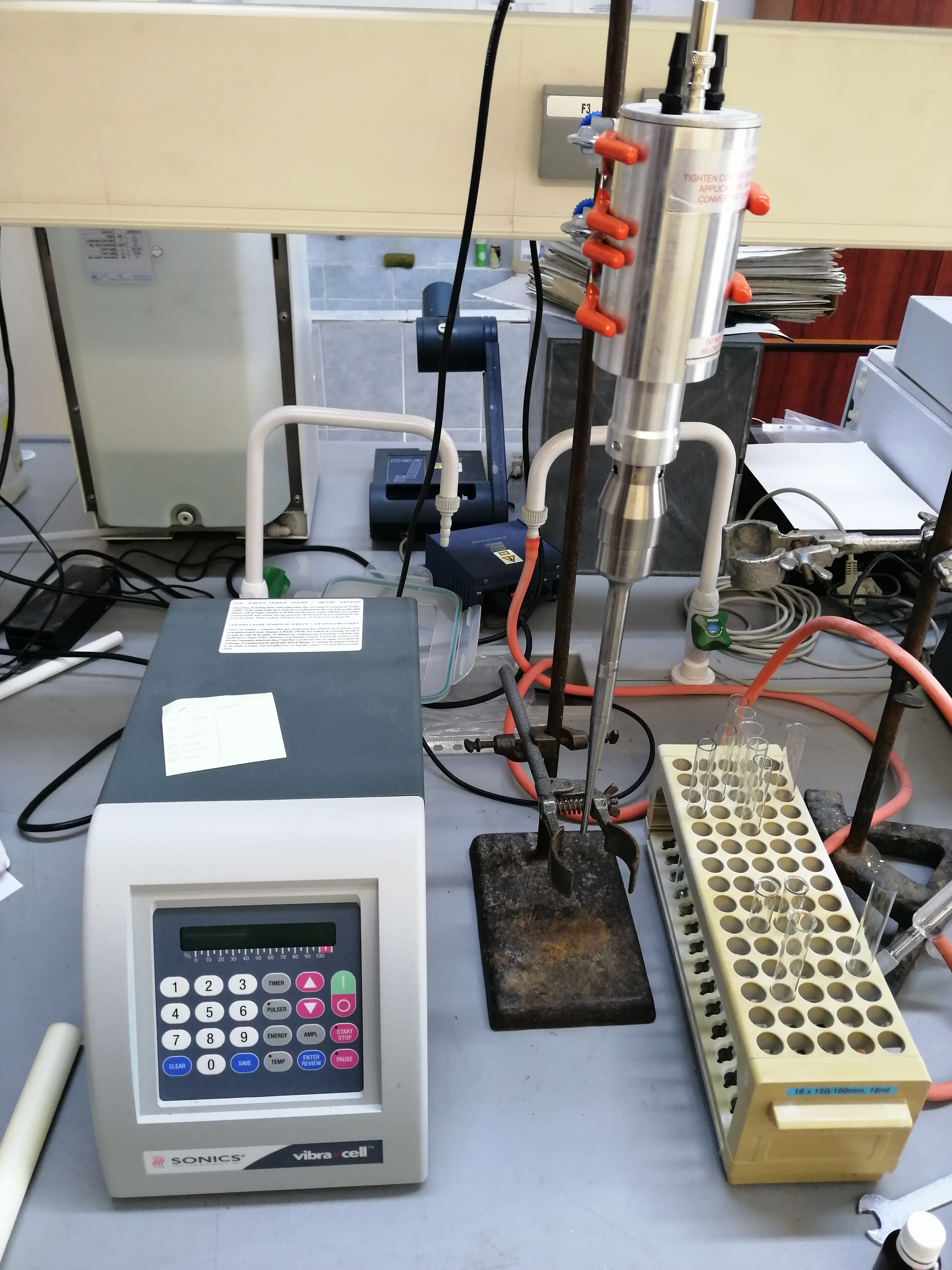
Elma Ultrasonic ultrasound machine
Availability:
Opening hours: 10-16
Main features:
Ultrasonic chemistry is a field of research in which waves in the frequency range of 20 kHz–1 MHz
they are the driving force behind chemical reactions. The reaction depends on acoustic cavitation, i.e. implosive formation, growth and collapse
of bubbles in the solution. Although this phenomenon, known as cavitation, lasts only a few microseconds, and the amount of
energy released by each individual bubble is minimal, the cumulative amount of energy generated is extremely large. br
The two ultrasound baths are microprocessor-controlled systems based on multi-frequency technology.
At the same time, the devices have electronic time and temperature control, autostart with temperature regulation / temperature preselection,
high performance transducer systems.
Utility:
Fields of use: ultrasound-assisted syntheses in organic chemistry, green chemistry, syntheses in organic solvent/water.
Conditions of access:
No special access conditions are required. The existing staff within the laboratory serves the requirements of the beneficiaries. Access to
the analyzes carried out in the laboratory are restricted during the teaching and research program
from within the group and during the periods of technical revision of the devices.
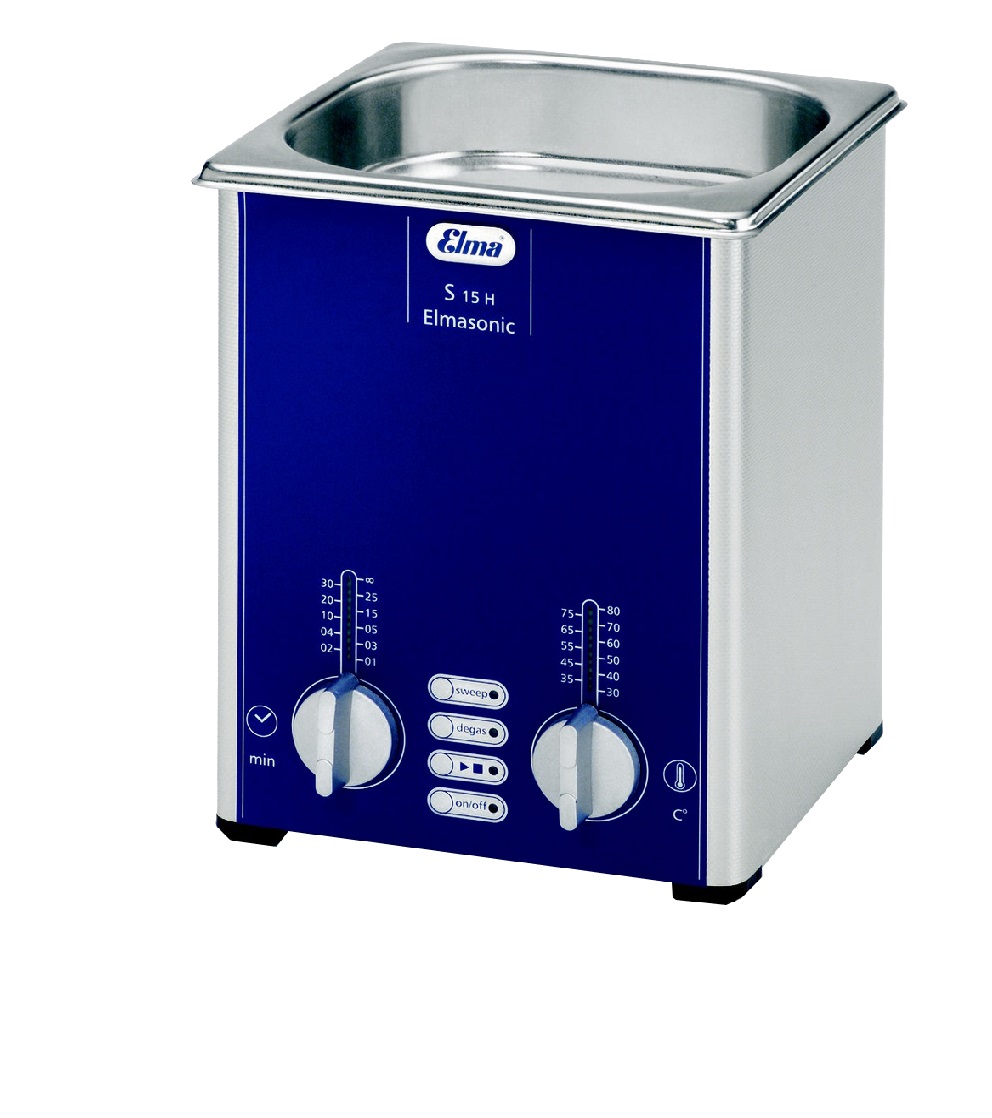
Ultrasound device Emag Emmi 20HC
Availability:
Opening hours: 10-16
Main features:
Ultrasonic chemistry is a field of research in which waves in the frequency range of 20 kHz–1 MHz
they are the driving force behind chemical reactions. The reaction depends on acoustic cavitation, i.e. implosive formation, growth and collapse
of bubbles in the solution. Although this phenomenon, known as cavitation, lasts only a few microseconds, and the amount of
energy released by each individual bubble is minimal, the cumulative amount of energy generated is extremely large. br
The two ultrasound baths are microprocessor-controlled systems based on multi-frequency technology.
At the same time, the devices have electronic time and temperature control, autostart with temperature regulation / temperature preselection,
high performance transducer systems.
Utility:
Fields of use: ultrasound-assisted syntheses in organic chemistry, green chemistry, syntheses in organic solvent/water.
Conditions of access:
No special access conditions are required. The existing staff within the laboratory serves the requirements of the beneficiaries. Access to
the analyzes carried out in the laboratory are restricted during the teaching and research program
from within the group and during the periods of technical revision of the devices.
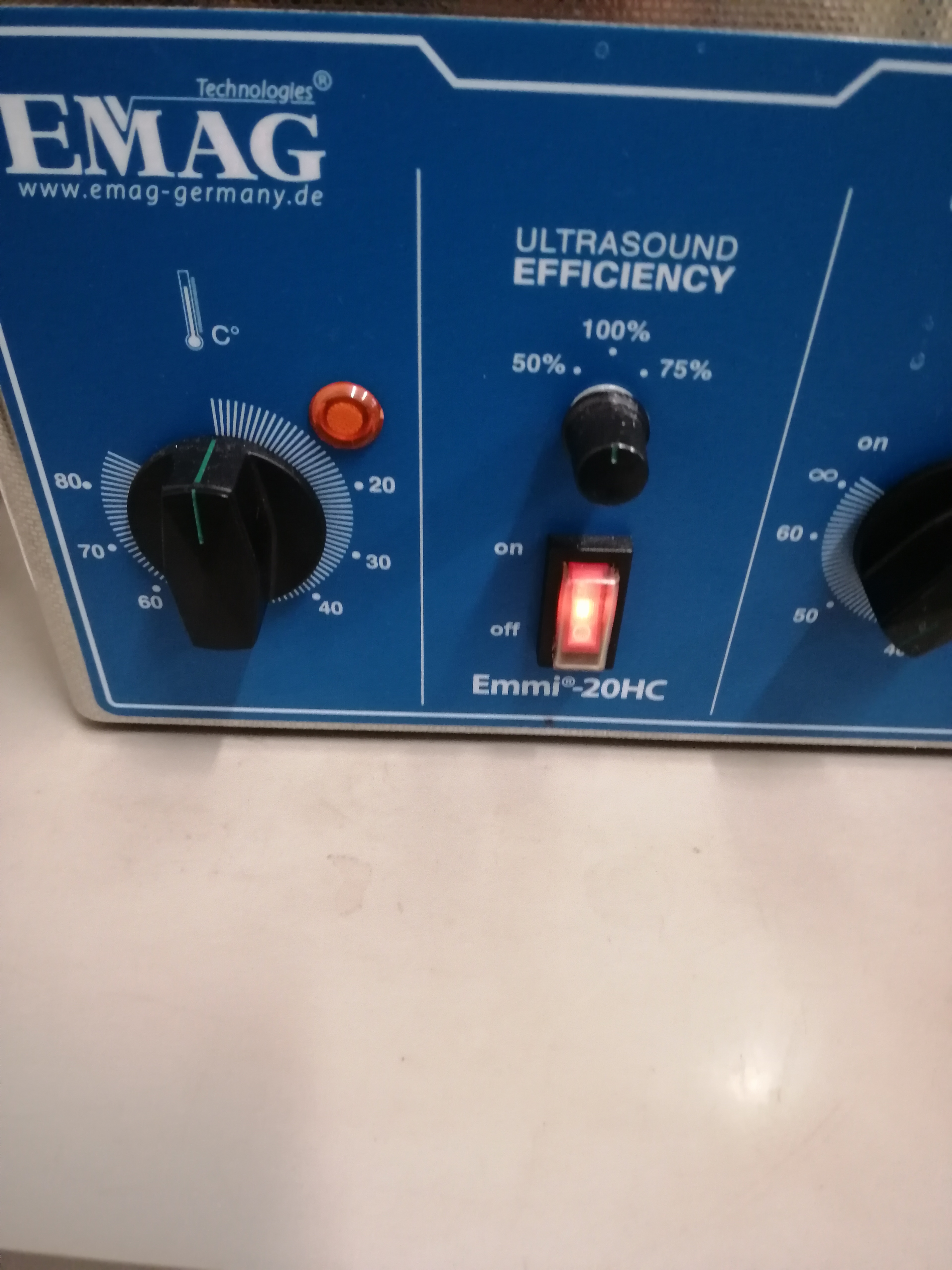
Photochemical reactions lamp- Pen Ray PS-4
Availability:
Opening hours: 10-16
Main features:
The submersible photoreactor system is composed of a pen-type lamp that can be inserted into the reaction, respectively a transformer.
These PCQ lamps emit about 90% of their radiation at 254 nm, which makes them particularly suitable for photochemical requirements.
The lamp is made of high quality quartz, which can withstand both high and low temperatures. br
The Pen-Ray system can be inserted into any reaction vessel/reactor where you want to initiate a reaction based on radicals.
Relative intensity at 3/4 inch distance (1.9 cm): 4400μw/cm2 , with 20mA current on the lamp.
Utility:
Fields of use: ultrasound-assisted syntheses in organic chemistry, green chemistry, syntheses in organic solvent/water.
Conditions of access:
No special access conditions are required. The existing staff within the laboratory serves the requirements of the beneficiaries. Access to
the analyzes carried out in the laboratory are restricted during the teaching and research program
from within the group and during the periods of technical revision of the devices.
